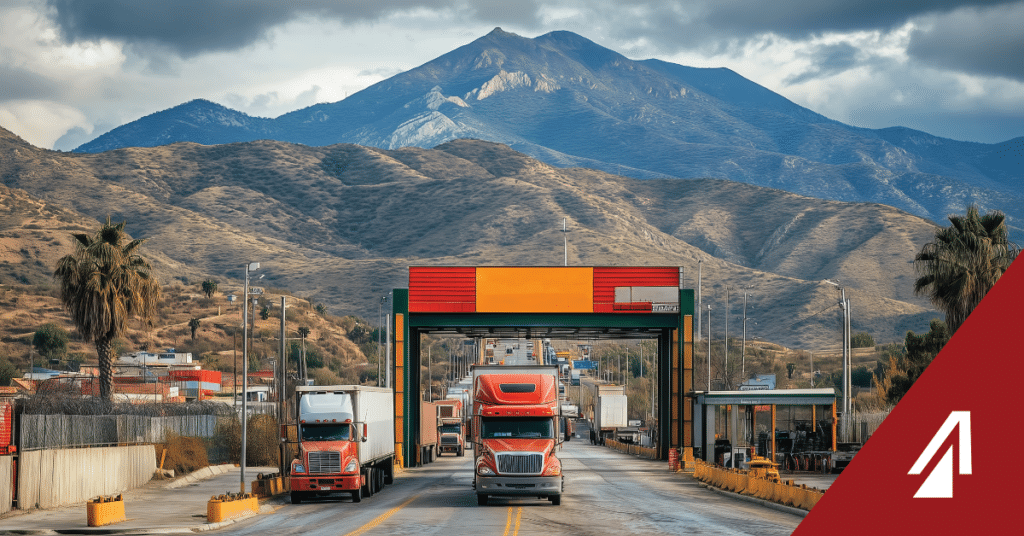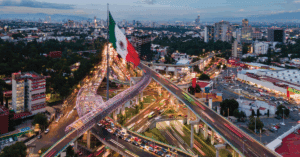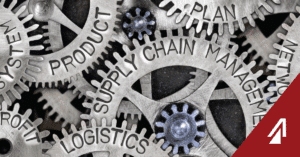In the manufacturing industry, the North American supply chain is more interconnected than ever before. Automakers source components from around the world; electronics manufacturers coordinate just-in-time deliveries from maquiladoras to assembly plants; and numerous industrial suppliers rely on fluid trade across the region. While trade agreements like the USMCA have lowered some barriers, manufacturers continue to face ongoing challenges, including new U.S. tariffs, customs updates or delays, unpredictable lead times, and bottlenecks at border crossings. Route optimization is a crucial component that enables companies to build resilience in today’s market.
This approach not only enables manufacturers to minimize transportation costs but also helps ensure smooth production processes and customer satisfaction. Let’s explore how manufacturers can unlock value by optimizing cross-border routes between the U.S., Mexico, and Canada and leverage the advantages of a dedicated solution design team.
Route Optimization is About More than the Fastest Route
At its core, route optimization seems simple: find the fastest and most cost-effective way to move freight from point A to point B. But in cross-border manufacturing logistics, it’s about much more:
- Multiple Border Crossings: Selecting the right crossing point, such as Laredo or El Paso, can impact congestion, customs efficiency, and overall costs. Laredo remains the busiest crossing; however, depending on the destination, alternative crossings may offer time and cost savings.
- Mode and Mix: Transportation methods (consolidation, LTL, truckload, intermodal) and their combinations can significantly impact costs and emissions, especially between northbound and southbound shipments.
- Production Schedules: Collaboration between a manufacturer and logistics provider helps align shipments more effectively with just-in-time production needs. Optimizing routes can enable more consistent travel times, provide data on real-world constraints, and result in more predictable delivery windows.
- Resource Utilization: Analyzing preferred routes and alternative options to optimize logistics solutions can help allocate drivers, vehicles, and assets more efficiently, while also minimizing fuel consumption and ongoing vehicle maintenance costs.
- Risk Factors: Proactive planning and route optimization can help manage the risks of unexpected disruptions, such as congestion or natural disasters. It also helps create a balance in the allocation of resources or the availability of equipment, which is significantly impacted by nearshoring in Mexico and rising southbound volumes.
- Customs and Policy Changes: Staying informed about tariff and border crossing requirements is crucial for managing logistics costs effectively. Optimizing transportation spend requires looking not just at routes and rates, but also at customs requirements, including the new Automated Export Notification requirement in Mexico on multiple HS codes.
Advanced route optimization leverages data and technology to adapt logistics strategies, promoting efficiency and sustainability dynamically. It’s about building a smarter, greener, more efficient, customer-focused, and resilient supply chain.
How Manufacturers Benefit from Cross-Border Route Optimization
- Improved Transit Times and Lead Time Variability: Dynamic routing can identify faster crossings by utilizing real-time congestion data and reducing lead time variability. Meanwhile, careful carrier selection can minimize delays at customs.
- Scalability and Flexibility: As shipment volumes increase, optimized routing enables manufacturers to manage complexity in real-time as conditions change without the need to acquire additional assets.
- Lower Logistics Costs: Optimization through strategies such as consolidation or mode selection enables manufacturers to maximize trailer utilization and reduce empty miles, while lowering costs and improving efficiencies.
- Enhanced Inventory Management: More predictable lead times enable manufacturers to lower safety stock levels, freeing up working capital.
- Increased Resilience: Proactive planning enhances supply chain resilience by utilizing various strategies, including the development of contingency plans, analyzing the effects of design solution adjustments, and identifying alternative carriers. This method can help manage unexpected disruptions, minimize risks, and reduce operational bottlenecks.
- Sustainability Gains: Efficient routing and mode optimization contribute to reduced carbon footprints, aligning better with Environmental, Social, and Governance (ESG) goals.
Analyzing historical data helps identify bottlenecks and costly lanes, leading to more predictable and efficient cross-border logistics. Additionally, real transit and dwell times highlight variability, helping to pinpoint routes or crossings that contribute to the greatest unpredictability.
How to Choose the Right Logistics Partner
Route optimization is a powerful but complex strategy. The right logistics partner brings:
- Deep experience with U.S., Mexico, and Canada networks
- Strong carrier relationships and bilingual teams
- In-house engineering and solution design teams
- Technology that integrates with your systems
- Customs compliance and cross-border expertise.
Together, these capabilities turn the concept of route optimization into measurable supply chain improvements. Optimizing cross-border routes and designing tailored logistics solutions isn’t just about saving costs; it’s also about enhancing efficiency, reducing complexity, supporting sustainability, and ensuring your production lines run smoothly.
ProTrans International is a customer-centric specialized logistics provider that takes a holistic approach and works in partnership with its customers to optimize the supply chain. We have a robust Solution Design team that creates tailored solutions focused on route optimization and continuous improvement. Get in touch with us today to start a conversation about your logistics needs.



